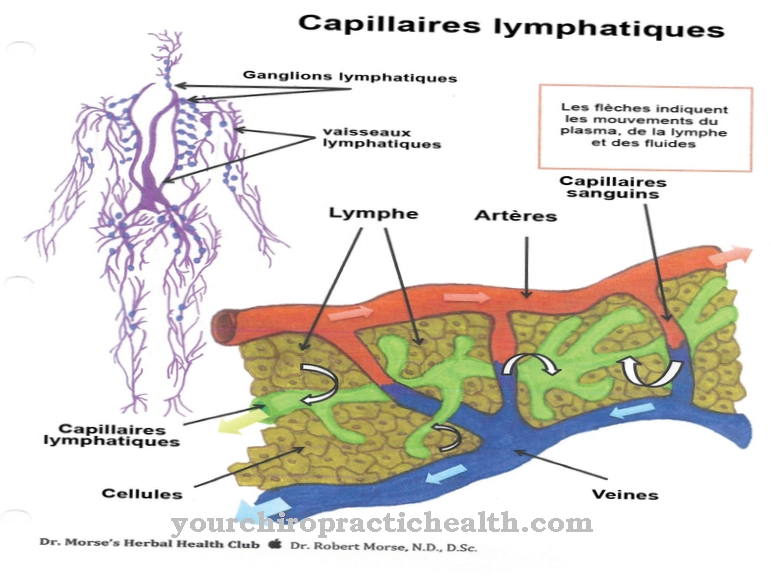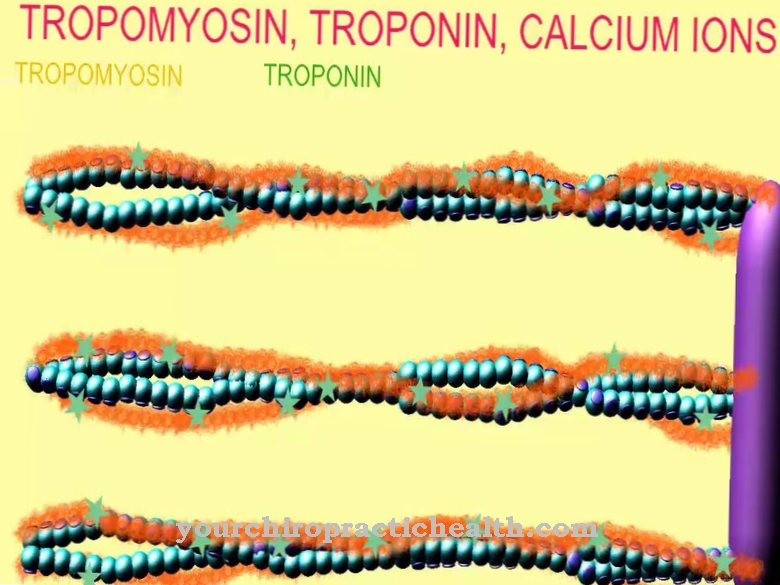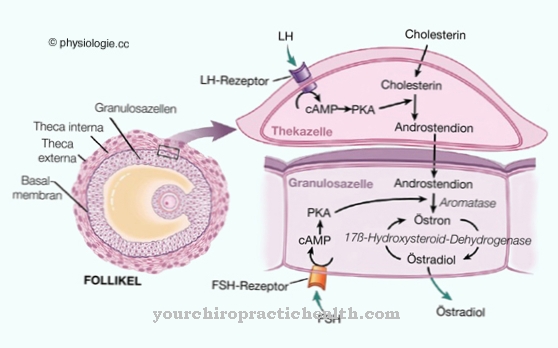As Atlanto-occipital joint is called the upper head joint. Together with the lower head joint, it enables mobility that is similar to that of a ball joint.
What is the atlanto-occipital joint?
The atlanto-occipital joint is also called upper head joint or Articulatio atlantooccipitalis known. This means the joint that is located between the occiput (Os occipitale) and the first cervical vertebra (atlas).
Together with the atlantoaxial joint (lower head joint) and the muscular attachments, it creates a connection between the base of the skull and the cervical spine. In addition, it forms an important integration region within the human body. The mobility of the atlanto-occipital joint is similar to a ball joint.
Anatomy & structure
The atlanto-occipital joint is an egg joint (ellipsoid joint). It is located between the two occipital condyles and the articular fovea of the 1st cervical vertebra.
The joint capsule of the upper head joint is reinforced on the abdominal side and the back. In the section of the back of the membrane between the cervical vertebrae there is a larger hole that is only closed by this membrane. From this area, the subarachnoid space or the cerebellomedular cistern, which is the enlargement of the latter, can be reached by using a cannula. In this way, cerebrospinal fluid (cerebrospinal fluid) is punctured. At this point, however, the spinal cord can also be destroyed by a sharp prick.
Inside the spinal canal is the tectorial membrane, a ligament that runs over the two head joints. The cruciform ligament of the 1st cervical vertebra (ligamentum cruciforme atlantis) is located below this.
The atlantoaxial joint is also important for the atlanto-occipital joint. This consists of the articulatio atlantoaxialis mediana and the articulatio atlantoaxialis lateralis. The 1st and 2nd cervical vertebrae (axis) are connected to one another via the upper joint sections of the articular processes. The two joint areas are encased by a common joint capsule. Several straps ensure the fixation. The dens axis, a cone-shaped bone process, is responsible for turning the head such as shaking the head. The pivot joint allows a rotation of 20 to 30 degrees on both sides. The lower head joint is responsible for around 70 percent of head rotations.
The fiber strands of the joint capsule, which stabilize the atlanto-occipital joint, are reinforced dorsally and ventrally like a ribbon. They are named Ligamentum atlantooccipitale anterius and Ligamentum atlantooccipitale posterius. The ligamentum cruciforme atlantis provides further stabilization.
Function & tasks
The interaction of the atlanto-occipital joint and atlantoaxial joint ensure the fine gradation of head movements. The upper head joint enables the head to be tilted forwards by 20 degrees and tilted backwards by 30 degrees. It can also tilt its head 15 degrees to one side. In this way, the atlanto-occipital joint enables the head to be bent and straightened. Combinations of nodding movements of the upper head joint and rotating movements of the lower head joint guarantee movements to all three spatial levels.
Furthermore, the atlanto-occipital joint, together with the atlantoaxial joint and the muscular fastenings, ensure a connection between the skull base and the cervical spine.
You can find your medication here
➔ Medicines for back painDiseases
The atlanto-occipital joint can be affected by various injuries. There is a risk that the spinal cord and the elongated medulla (medulla oblongata) will be pinched or even severed due to a broken neck.
This leads to a fracture of the tooth of the 2nd cervical vertebra. A rupture of the ligaments of the dens axis is also possible. This in turn results in severe damage to the respiratory and circulatory center, which immediately leads to the death of the person concerned. If an injured person who does not breathe spontaneously is suspected of having broken the dens axis, vital intubation is required to counteract any damage to the spinal cord or the elongated marrow. The cervical spine must be in a neutral position.
Ligament injuries in which there is no fracture of the dens axis can lead to instability of both head joints. These include a. Symptoms such as breathing disorders or central sleep apnea. If the dens axis is incomplete or not developed at all, this is the cause of an atlanto-axial subluxation. The head joint is incompletely dislocated between the 1st and 2nd cervical vertebrae. There is therefore a risk of spinal cord damage.
Another possible injury to the upper head joint is a tear in the tether, which is located between the 1st cervical vertebra and the dens axis. The joint capsule parts between the 1st and 2nd cervical vertebrae are also often damaged. The atlas threatens to drift off on the Axis. Doctors then speak of an atlantoaxial instability injury.
A pronounced instability of the two head joints is also possible with tears in the joint capsule between the ligaments or atlas and the occiput. It is not uncommon for doctors to overlook the impairment of instability in their diagnosis, because the patient is more prone to muscle spasms than to instability during the examination. The reason for this is the increased tension in the muscles, which is a protective device against the vertebrae drifting apart. The loss of stabilization of the head joint can, however, be demonstrated by fluoroscopy after administration of muscle relaxants.
The symptoms of an instability injury arise primarily from circulatory disorders in the region of the internal carotid artery, the jugular veins and the vertebral arteries. This can lead to a repeated lack of oxygen. In addition, those affected often suffer from visual disturbances such as flying mosquitoes, dizziness and lightheadedness. However, infarction does not occur. Instead, there is a slightly pronounced cell death of the brain parenchyma.




.jpg)



















.jpg)



